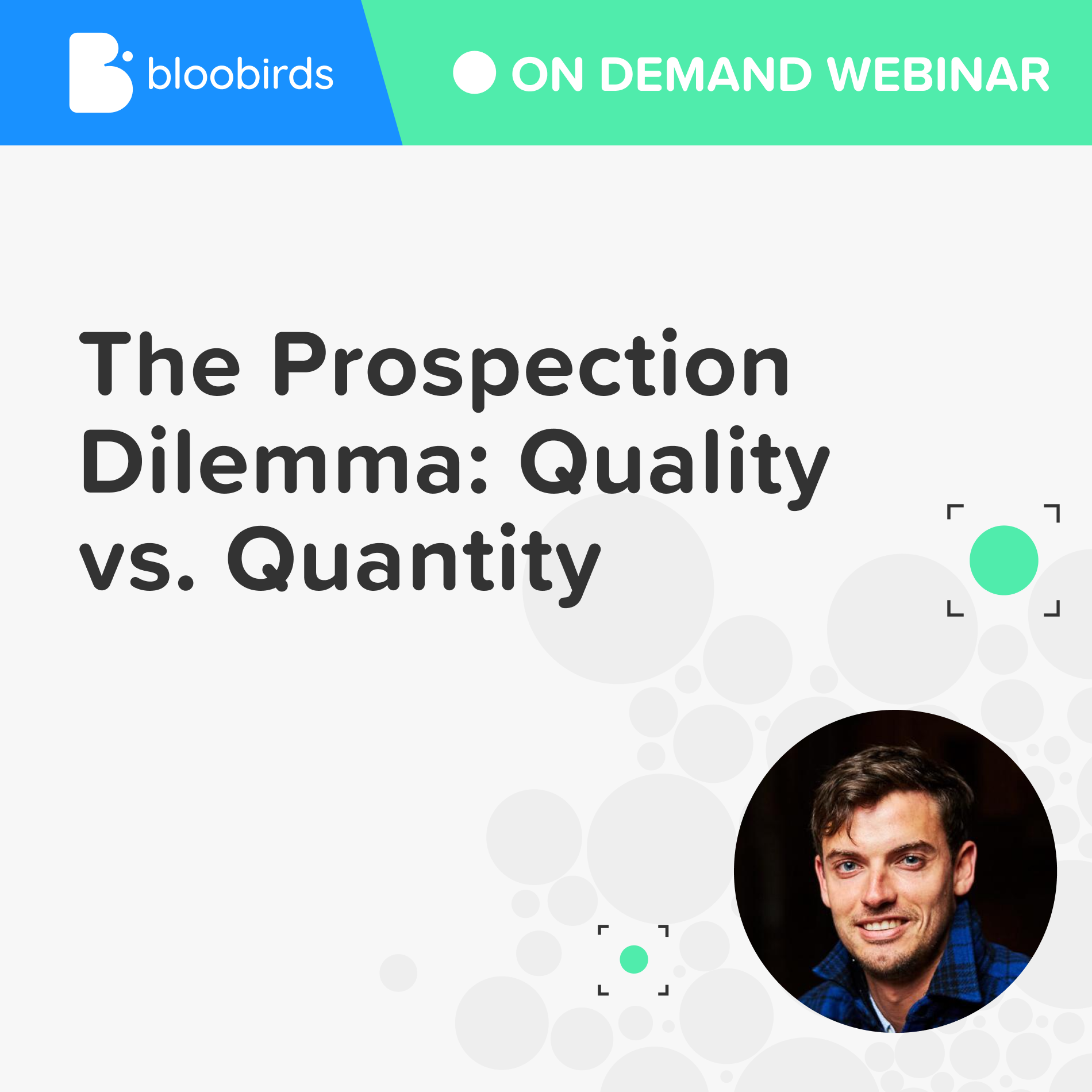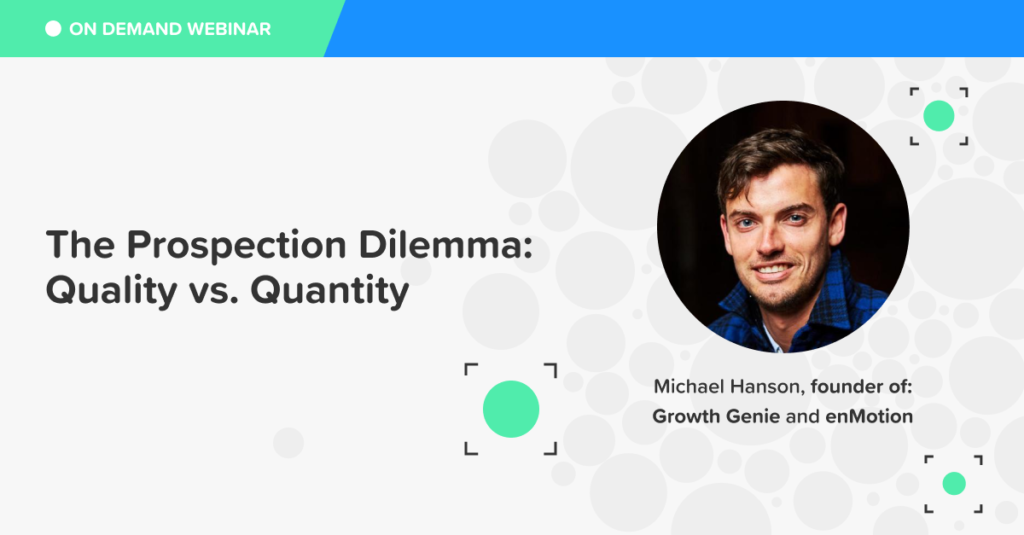For those of you who were not able to tune into last week’s webinar with Michael Hanson, Founder of GrowthGenie and enMotion, don’t dismay! We’ve got you covered.
Here at Bloobirds, we’ve brought together the most relevant prospecting insights from the live Q&A so you can begin structuring the perfect outbound sales cadence today.
If you’re looking to deliver more value to your prospect, then keep on reading below. You’ll walk away with great tips to implement proactive changes within your company and sales development team.
Key Take-Aways
Deliver value and you’ll monetize your passion
If you are not familiar with Michael Hanson, let us just give you a quick rundown on his prior professional experience. Before founding his current companies Growth Genie and enMotion, Hanson worked at CloudTask as VP of Growth.
Part of his strategy entailed posting frequently on LinkedIn to build up a big following on the professional social media platform. Not much time had passed though until he realized that he had discovered gold.
The number of requests flooding his LinkedIn inbox for more prospecting insights was overwhelming. If he could continue to offer value by giving tips about how to book a meeting or how to use LinkedIn for lead research, he had the possibility to monetize his passion for sales. And that he did.
If your passion can translate into delivering value to the customer or client, it can become your source for financial success.
Align departments to maximize efficacy and meet prospects’ needs
When marketing and sales departments are aligned within a company, you can be sure that your company is fully addressing prospects’ needs and pain points.
As Michael explained in the webinar, his former employer held brief meetings on a daily basis between the two departments to maintain a constant flow of communication.
For example, if marketing was going to implement a campaign, sales would know immediately. This ensures that no SDR gets caught off guard when a prospect made reference to an aspect from that campaign.
Similarly, sales fed the marketing department any common themes gathered from prospect calls. Given that sales development representatives are on the front line, they can help a company’s marketeers create relevant content accordingly.
Update your onboarding expectations
We’re proud to say that both Michael and Bloobirds are in agreement when we talk about onboarding expectations. Every company will vary with onboarding time.
However, if you want to be efficient and get your SDRs in action, two to three weeks are sufficient to learn the sales prospecting process.
During those two weeks of SDR onboarding, companies should shift their focus from the product/service to the customer.
- Who’s your ideal customer profile?
- What are their challenges and pains?
- How can your software overcome those obstacles and provide a solution?
- What results can it [your product] offer your customer?
This structure helps avoid the common mistake of flooding your SDRs’ onboarding experience with information that does not help them achieve their goal.
What’s the main aim again? To book that meeting between the prospect and your company’s experts.
An SDR is selling a meeting or curiosity about your product, not the product itself. That’s the sales teams’ job.
And if your SDRs are not perfect during the ramp-up period, that’s all right. Constant coaching and fostering a “learn-as-you-go” environment will empower your sales development reps and get them to optimal performance within the next two months.
Discover where you can maximize the prospecting cadence
Every company will have its own prospecting cadence. However, as Michael pointed out, there are some common areas that help foster the most successful cadences.
- Multi-channel: While you send cold emails to prospects, it may not get you the result you want in the time you need. Make the most of other platforms like LinkedIn, or call, to reach out to leads.
- Messaging: How fine-tuned is your SDRs’ messaging to prospects? The better it is at addressing prospects’ needs and pain points, the more likely you’ll gain their business.
- Encouraging Environment: In order to avoid bigger problems in the long run, like lack of motivation or low meetings booked, it’s important that SDRs feel comfortable. Encourage them to be proactive and ask for help from managers and other teammates.
- Day 1, Call #1: It’s still recommended to make the first call to the prospect on day one. To warm up the call, do extensive research on the prospect’s profile or company using LinkedIn Sales Navigator, Crunchbase, G2, and more.
- Personalization: This ties into the last point mentioned. In order to really make a positive impact with a prospect, you need to personalize the message. To what degree you want to do that, well…more is always better. As Michael explained though, in one 8-touch mail sequence example, you can be efficient by simply making “4 emails seem personalized using tags… [while] the other 4 emails take more time to look at their social networks and company”.
- Nurturing: If at first, you don’t succeed. Try, try again. After many attempts, then pass it along to lead nurturing with a great campaign organized by the marketing department. When following up, do some more digging than usual. Offer up a piece of personalized content that addresses that prospect’s updated pain points.
If you enjoyed these highlights, we encourage you to check out the webinar in its entirety. You’ll hear much more about how to take full advantage of your sales development team’s potential and generate more meetings.

